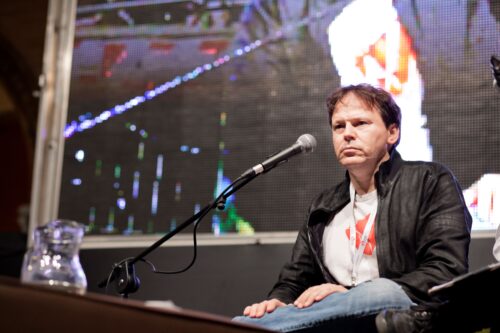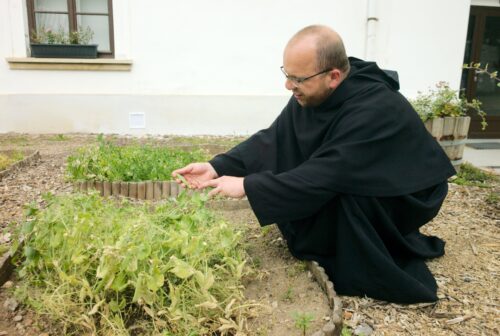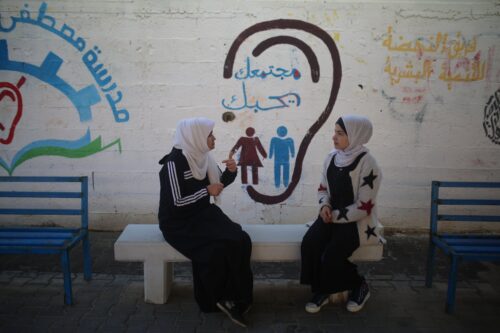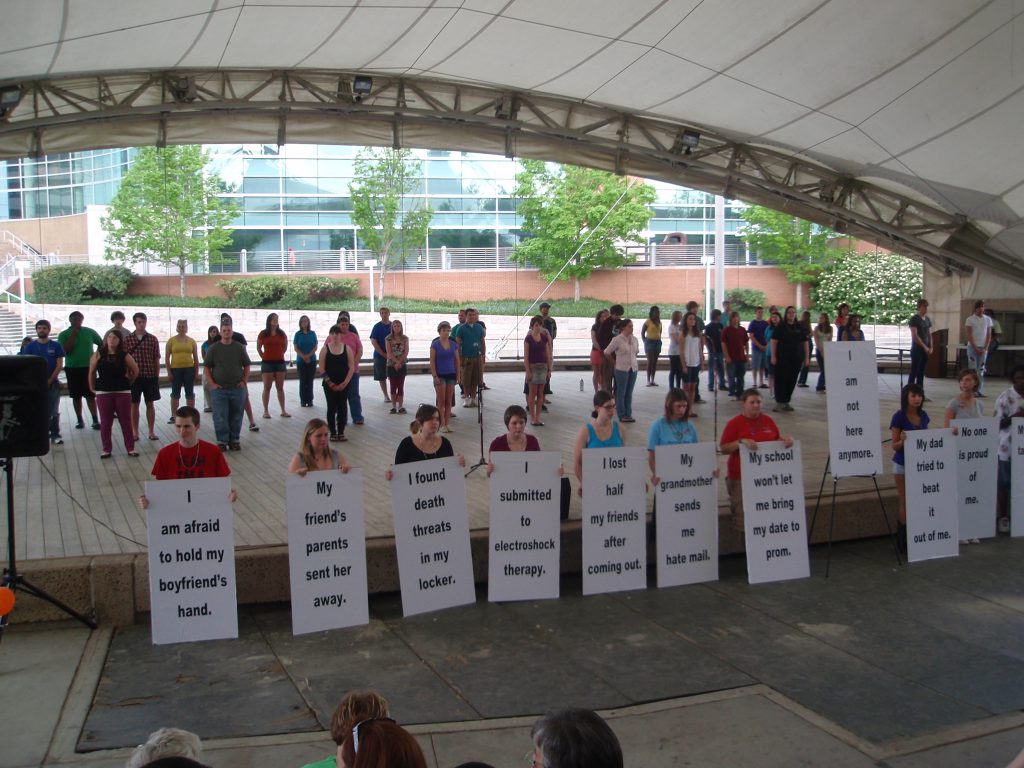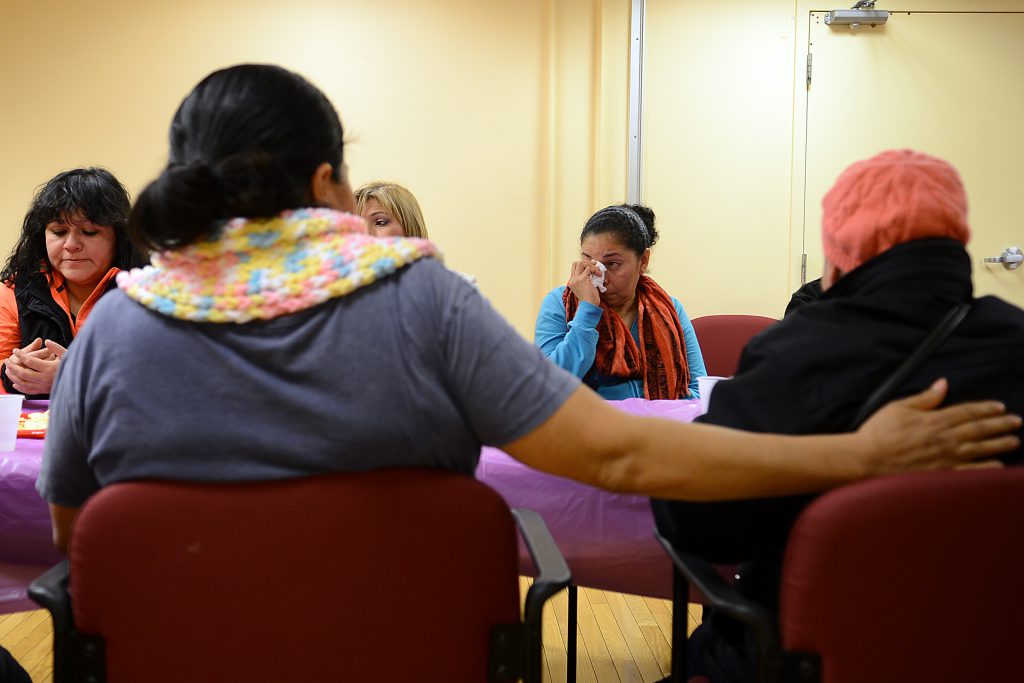Letting Silence Have a Voice in #MeToo
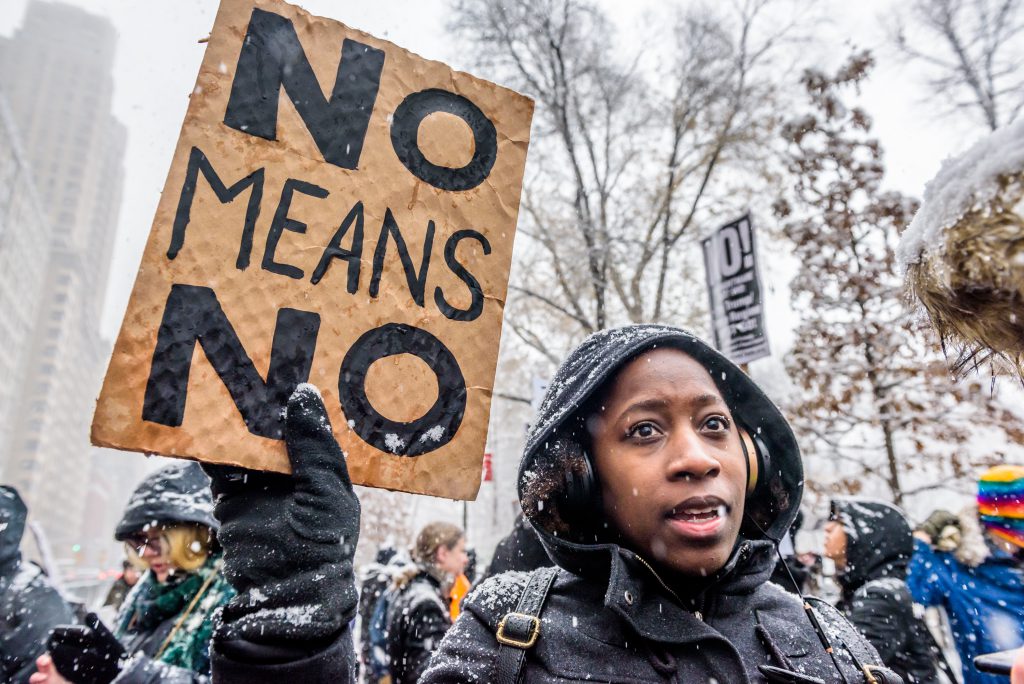
“Hello?” The voice on the other end of the phone line is tremulous, the connection crackling with mild interference and a sense of urgency. Using a line often employed by rape crisis advocates to begin hotline conversations, I respond, “Hello, this is the rape crisis center. How can I support you this evening?” The line remains quiet but for the muffled sound of breathing, the dead air quivering between us. I maintain that silence, letting the soundlessness stretch out over seconds, minutes.
As an anthropologist who studies gender-based violence and trauma, and as a rape crisis advocate, I’ve been trained in the importance of holding space for survivors’ stories, even if those stories remain unspeakable. While the crisis hotline I volunteer with can connect survivors to resources—from hospital advocates to legal representation—it is also an anonymous support system for individuals who have experienced sexual assault to be heard and listened to. Often, that listening means witnessing the echoing silence left in the wake of a rape.
Rather than compel the caller to tell their story, I simply say, “I’m here for you.” I continue to wait, maintaining a solicitous presence in the soundless and secretive process of recovery. From my experience and training, I have learned to carefully avoid conveying an implicit message that my care is contingent upon a survivor’s confession.
Sadly, few spaces allow survivors to dictate when and how to tell their stories. Society today tends to put a premium on the performance of victimhood. In courts, police stations, medical examination rooms, newspapers, and on social media, we too often ask that survivors excavate their wounds and render their exquisite pain explicable, like an autopsy, before we take the step of deeming them worthy of care or support. We expect survivors to step into the breach, despite the fact that we lack the institutional models—and often, the specialized training—to listen or respond adequately to their stories. At worst, some survivors find themselves accused of false reporting or see their testimonies co-opted by news and media outlets to further narratives of the “sad rape girl.”
The burden of explanation has been a problem for decades and remains a problem even for the most recent movements against sexual violence, including the #MeToo viral campaign that began in October 2017. The conversation around sexual violence is hardly new, although the scale of disclosures it has precipitated domestically and internationally is staggering. The issue today is how the #MeToo movement addresses silence and safety—and how it can effect change among a vulnerable population.
The silence around sexual violence has historically been deafening. In Western societies, where a woman’s modesty and sexual purity were not only valued but often conflated with her family’s honor, sexual assault was perceived as a question of her moral integrity—a source of shame and rebuke that often prevented victims from speaking out. Similarly, until the late 20th century, violence between spouses was considered a “private matter”—rape or abuse within marriage, what we would now classify as domestic violence or intimate partner violence, did not become a crime in the United States until the passage of the Violence Against Women Act in 1994.
During the early feminist movement of the 1970s, when women began to develop a platform for mobilization, activists uncovered mutual experiences of abuse and harassment. Speech, especially storytelling, subsequently became one of the primary modes of mobilization and consciousness-raising within the women’s rights movement. Feminists organized speak outs and “Break the Silence” events, specifically assembled to marshal the power of language. Participants hoped that the hidden dimensions of violence that many men, women, and children faced would be addressed by making this public secret visible.
The individual testimonies of survivors in the late 20th century marshaled by the anti-rape movement provided a personal texture to experiences of violence, while resisting the scandal and disgrace often associated with victimhood. Rather than an issue of personal responsibility, sexual violence was instead framed as a social and structural problem, one that indicted the legislators and community leaders who ignored or avoided their complicity in a culture where rape was so pervasive. These narratives led to criminal and legislative protections for survivors—restraining orders against abusive partners, and federal funding for rape crisis centers that could escort victims to hospitals, help them find temporary housing for the night, or assist them with seeking legal counsel.
These measures increased protections for survivors and made violence a more visible concern. Yet the criminalization of violence has continued to hinge upon particular narratives of suffering: a vision of the “perfect victim” that is often misaligned with the actual experiences of survivors. In newspapers and court settings, public opinion and verdicts often depend upon having the “right” kind of victim narrative: one that is compelling, consistent, and coherent.
(This is not just true for sexual violence. In the mid- to late 1990s, for example, when access to HIV drugs was scarce in West Africa, international health agencies sought out “good stories” to help with fundraising and counteract stigma around the disease. These agencies thought that HIV stories would help those who had become infected and counter the stigma associated with the disease. This unwittingly created a market in which stories of being HIV-positive were expected in order to receive care—even while the act of disclosure put patients in peril of being abandoned by their families and social networks.)
The victim-oriented storytelling framework also does not acknowledge the ways that trauma can atomize language, disrupt memory, and leave a person without words. Social scientists, among others, have long considered the indescribable registers of pain. As writer Junot Díaz recently revealed about his own experience with child sexual abuse, “That violación [violation]. Not enough pages in the world to describe what it did to me. The whole planet could be my inkstand and it still wouldn’t be enough.” To some survivors and victims, language seems insufficient to describe such wounds. Psychological and neurobiological studies of trauma from sexual violence indicate that the brain can perforate experiences of violence with lapses in memory or disrupt chronological recollection. This can make it difficult to recall the kinds of details necessary to file a report with the police, let alone provide “credible” testimony in court. (Such symptoms are similar to those of many veterans with post-traumatic stress disorder.) Yet, in the absence of visible cues of violence—the evidence from a rape kit, or bruises and scars—the “truth” of violation often depends on the voice of the survivor and the supposed veracity of their claims.
In the last few years, numerous writers, activists, and public survivors have written and spoken about the retraumatizing effects of reliving violence, the expectation that survivors are in charge of transforming rape culture and counteracting predatory behaviors, and the perceived heroism of telling one’s story in public. Others have noted how putting the burden of disclosure on the survivor also constructs a false dichotomy of bravery and cowardice between those who come forward and those who don’t.
The expectation that survivors make a public confession is even more of a burden for people often overlooked by the #MeToo movement and other networks of public support: undocumented immigrants who may be forced to choose between domestic violence and deportation, individuals with physical or mental handicaps, members of the LGBTQIA community (“I” means intersex; “A” stands for asexual), and sex workers, to name a few. Myths about what constitutes “real rape” and who qualifies as a “true survivor” are so pervasive that I often get calls to the crisis hotline with a simple question—“Was I raped?” Callers turn to the hotline out of fear of reproach or recrimination from authorities, friends, and family members. For individuals whose professions place them in precarious legal situations, for minors who endure child sexual assault but are fearful of being turned over to the foster care system, and for male survivors who feel as though their masculinity has been compromised by their assault, speaking out only redoubles their precariousness and insecurity.
The compulsion for a narrative also sensationalizes suffering and evokes a kind of voyeurism that neither shields victims nor addresses the structural factors underlying survivors’ vulnerability. In her retelling of the Greek myth of Philomela—the “princess of Athens” raped by her brother-in-law Tereus and forcibly muted—American poet Paisley Rekdal writes, “Language does not heal terror, and if it brings us closer to imagining the sufferer’s experience, this too does not necessarily make us feel greater compassion, but a desire for further sensation.” She asks us what kind of emotional labor we demand of storytellers, even when those narrators are debilitated by the story itself.
We are often uncomfortable with silence—it disturbs our impulse for explanation or closure. To give voice to something makes it explicable, even preventable. But silence and discomfort are also extremely provocative. Consider student activist Emma González, who, amid the impassioned rhetoric of her peers at the “March for Our Lives” rally on March 24 in Washington, D.C., gripped the crowd of tens of thousands with her willful determination to abrogate speech. After a short and emotional address, she stood silent at the podium for close to four and a half minutes. Her address and silence mirrored the amount of time in which the recent Florida school shooter took 17 lives. In the quiet, the tension, emotion, and power were palpable.
Rape crisis advocacy was not only built upon a feminist politics of storytelling—it was premised on a praxis of listening to what has long been unsaid and unspoken, the “hidden transcripts” often effaced from public records. Advocates at the rape crisis center where I serve must undergo over 60 hours of rigorous instruction that interrogates many of the misconceptions that suffuse rape culture, including dismantling the trope of the perfect victim narrative. Rather than relying upon confession to activate certain social support systems, the rape crisis center comes from a practice of patience and acceptance, allowing survivors to determine the terms of their care. As advocates, we may be the first person a survivor has ever told about their experience. Or we may cultivate the space where survivors start to piece their story together, crafting a new narrative of after-care.
“I’m here for you. I’m here to talk when you’re ready,” I repeat into the silence, knowing that the absence of a dial tone means that something is happening in the hush of dead air.
I trust the caller to guide the conversation. In waiting, I try to be an ally in their initial steps toward recovery and restorative justice. The quiet space we share becomes a type of lifeline accounting for gaps in their continuum of care, a space in which they can listen to themselves—and I can listen for what they cannot yet, and may never, say. In such a way, we can start to heal the divide between speech and action.





















